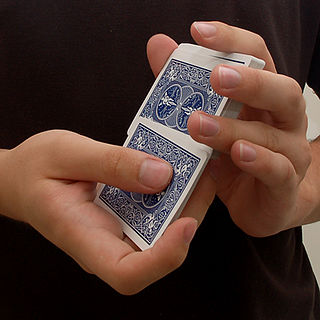
Shuffling is a procedure used to randomize a deck of playing cards to provide an element of chance in card games. Shuffling is often followed by a cut, to help ensure that the shuffler has not manipulated the outcome.

Spades is a trick-taking card game devised in the United States in the 1930s. It can be played as either a partnership or solo/"cutthroat" game. The object is to take the number of tricks that were bid before play of the hand began. Spades is a descendant of the Whist family of card games, which also includes Bridge, Hearts, and Oh Hell. Its major difference as compared to other Whist variants is that, instead of trump being decided by the highest bidder or at random, the Spade suit always trumps, hence the name.
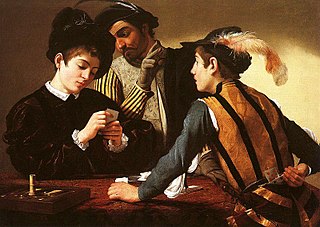
Sleight of hand refers to fine motor skills when used by performing artists in different art forms to entertain or manipulate. It is closely associated with close-up magic, card magic, card flourishing and stealing. Because of its heavy use and practice by magicians, sleight of hand is often confused as a branch of magic; however, it is a separate genre of entertainment and many artists practice sleight of hand as an independent skill. Sleight of hand pioneers with worldwide acclaim include Dan and Dave, Ricky Jay, Derek DelGaudio, David Copperfield, Yann Frisch, Norbert Ferré, Dai Vernon, Cardini, Tony Slydini and Helder Guimarães.
Spite and Malice, also known as Cat and Mouse or Screw Your Neighbor, is a traditional card game for two or more players. It is a reworking of the late 19th century Continental game Crapette and is a form of competitive solitaire, with a number of variations that can be played with two or three regular decks of cards. It is descended from Russian Bank.

Card manipulation is the branch of magic that deals with creating effects using sleight of hand techniques involving playing cards. Card manipulation is often used in magical performances, especially in close-up, parlor, and street magic. Some of the most recognized names in this field include Dai Vernon, Tony Slydini, Ed Marlo, S.W. Erdnase, Richard Turner, John Scarne, and Ricky Jay. Before becoming world-famous for his escapes, Houdini billed himself as "The King of Cards". Among the more well-known card tricks relying on card manipulation are Ambitious Card, and Three-card Monte, a common street hustle also known as Find the Lady.

Mau-Mau is a card game for 2 to 5 players that is popular in Germany, Austria, Serbia, South Tyrol, the United States, Brazil, Poland, Greece, Czech Republic, Slovakia and the Netherlands. Mau-Mau is a member of the larger Crazy Eights or shedding family, to which the proprietary card game Uno belongs. However Mau-Mau is played with standard French or German-suited playing cards.
A trick deck usually refers to a deck of playing cards that has been altered in some way to allow magicians to perform certain card tricks where sleight of hand would be too difficult or impractical.

John Scarne was an American magician and author who was particularly adept at playing card manipulation. He became known as an expert on cards and other games, and authored a number of popular books on cards, gambling, and related topics.
The Ambitious Card, or Elevator Card, is a magic effect in which a playing card seems to return to the top of the deck after being placed elsewhere in the middle of the deck. This is a classic effect in card magic and serves as a study subject for students of magic. Most performing card magicians will have developed their own personal Ambitious Card routine.
Speed is a game for two players or more of the shedding family of card games, in which each player tries to get rid of all of their cards first.
Self-working magic is a commonly used term in magic to refer to tricks that work simply from following a fixed procedure, rather than relying on trickery, sleight-of-hand, or other hidden moves.
This is a glossary of conjuring terms used by magicians.
The Twenty-One Card Trick, also known as the 11th card trick or three column trick, is a simple self-working card trick that uses basic mathematics to reveal the user's selected card.
Blackstone's Card Trick Without Cards is a magic trick. As the trick requires only that a card is thought of, it does not require the use of a deck of cards.
The Circus Card Trick is a self-working card trick where the performer uses verbal misdirection to prompt the participant into betting that the performer has failed to execute the trick correctly. The performer exploits the ambiguous wording of their patter to win the bet in a manner unexpected by the audience. It is often recommended for beginning magicians due to its entertaining and self-working nature.
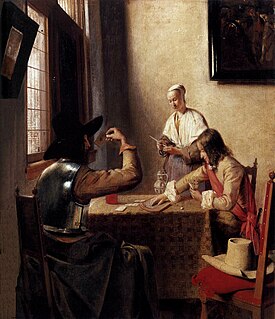
Klaverjas or Klaverjassen is the Dutch name for a four player trick-taking card game using the piquet deck of playing cards. It is closely related to the card game klaberjass, which is popular internationally and also known as Bela, and various other names. It is one of the most popular card games in the Netherlands, traditionally played in cafes and social clubs. The game offers a considerable level of complexity and depth. It has numerous variants, but universal fundamental rules exists.
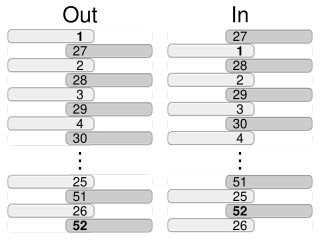
The faro shuffle (American), weave shuffle (British), or dovetail shuffle is a method of shuffling playing cards, in which half of the deck is held in each hand with the thumbs inward, then cards are released by the thumbs so that they fall to the table interleaved. Diaconis, Graham, and Kantor also call this the technique, when used in magic.
The Si Stebbins stack is a cyclic mathematical card stack. It was popularized by the magician Si Stebbins, and can be constructed from a standard 52-card deck. Frequently used in card magic, its properties allow the position and value of each card in a deck to be determined.
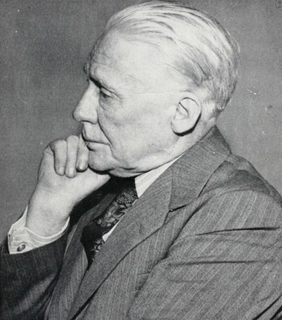
Jean Hugard was an Australian professional magician.











